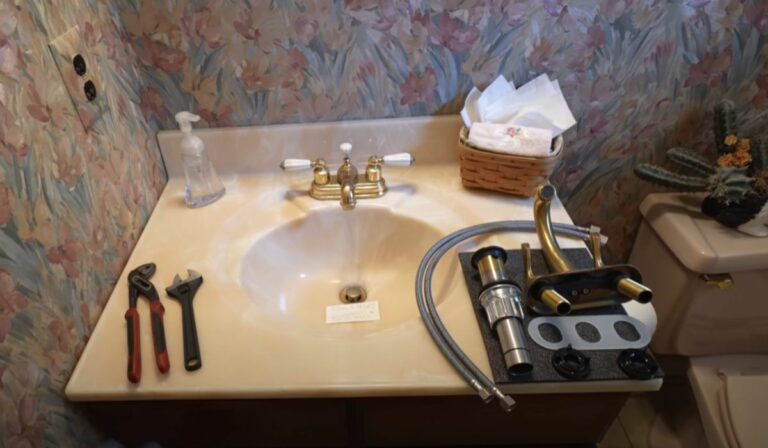Why Fill Bathtub With Water During Power Outage
When the power goes out, it’s easy to overlook one critical resource: water. You might wonder why filling your bathtub with water becomes an important step during an outage. This simple action can significantly ease the challenges of losing electricity, from basic hygiene to flushing toilets, and even emergency uses. In this text, you’ll learn why storing water in your bathtub is a smart, practical move when the lights go out, along with how to do it safely and what alternatives you might consider.
Understanding the Importance of Water During Power Outages
Water is essential for survival, hygiene, and sanitation, and during a power outage, your usual water supply system might be disrupted. Many homes rely on electric pumps to draw water from wells, and municipal water pressure can drop when electricity is lost. Without power, water stops flowing reliably from your taps, meaning you might quickly find yourself without clean water for drinking, flushing toilets, or washing. Filling your bathtub with water beforehand or as soon as an outage starts helps you store a reserve that can be used for multiple purposes, easing the strain on your household until power or water service is restored.
Uses of Bathtub Water When the Power Is Out
Having water in your bathtub provides versatile options during a blackout. The most immediate use is for flushing toilets, pouring stored water into the toilet bowl can trigger a manual flush without electricity. It also supplies water for washing hands, cleaning surfaces, or even brushing teeth when tap water isn’t flowing. In emergencies, you can use bathtub water for cooking or drinking after proper treatment, such as boiling or purification tablets. Also, this stored water can help keep you cool or clean in hot conditions and maintain your general hygiene, which is crucial when outages last longer than a few hours.
How to Safely Fill and Store Water in the Bathtub
To maximize safety and water quality when filling your bathtub, start before the outage if possible. Use a clean, disinfected tub by scrubbing it with a mild bleach solution and rinsing thoroughly. Fill the tub with cold tap water to reduce microbial growth. Cover the tub tightly with a plastic sheet or clean tarp to prevent contamination from dust, insects, or pets. Avoid adding soaps or chemicals to this water. If you must fill during an outage, ensure your tap water is safe to use. Keep stored water away from direct sunlight and extreme temperatures. Label the water as non-potable except if you treat it properly before drinking. Regularly flushing and refilling your bathtub water reserve every few months helps maintain freshness.
Precautions to Take When Using Bathtub Water
While bathtub water can be a valuable emergency resource, you need to handle it carefully. Avoid drinking water unless you’ve boiled it or purified it with appropriate tablets to eliminate bacteria and viruses. Use this water primarily for flushing toilets, cleaning, or washing hands. Always store water in a covered tub to minimize contamination risks. If you notice any strange odor, discoloration, or cloudiness in the water, do not use it for consumption. Also, be mindful of potential slips or falls since spilled water can make bathroom floors dangerous. Finally, once your regular water supply is restored, drain and clean your tub before refilling it for everyday use.
Alternative Water Storage Solutions
Besides using your bathtub, there are other effective ways to store water for emergencies. Large, food-grade water containers or barrels can hold several gallons and are portable for outdoor use or during evacuations. Collapsible water bags are space-saving and convenient for short-term needs. You can also fill clean pots, pitchers, or jugs with tap water and store them in your fridge or cool area. Some families invest in water filtration systems or rainwater harvesting setups as long-term alternatives. But, the bathtub’s advantage lies in its large capacity already integrated into your home, requiring no extra equipment or storage space. Combining several storage methods ensures you have enough water regardless of the outage duration or scenario.
Preparing for Power Outages Beyond Filling the Bathtub
Filling your bathtub with water is just one part of smart outage preparedness. It’s also wise to maintain an emergency kit with bottled water, non-perishable food, flashlights, batteries, a portable phone charger, and basic first aid supplies. Stock up on hygiene essentials like hand sanitizer, wet wipes, and toilet paper since running water might be scarce. Consider a generator or alternative power sources to keep critical appliances running. Stay informed through battery-powered radios or smartphone alerts. Planning ahead and combining water storage with other preparations ensures you’re ready for various challenges that come with power outages.
Conclusion
Filling your bathtub with water during a power outage is a practical and cost-effective way to maintain access to this vital resource when normal water supply systems fail. It’s not just about convenience: it’s about safeguarding your health and comfort during uncertain times. By understanding the proper way to store water, using it safely, and combining it with other emergency preparations, you empower yourself to handle power outages with greater confidence. So, next time you hear about an impending blackout, grab a clean tub, fill it up, and rest a little easier knowing you’re ready.

